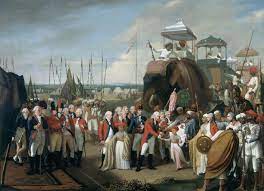Permanent Settlements in Bengal refer to a system of land revenue collection and administration introduced by the British East India Company in Bengal in 1793. The Permanent Settlement was a major reform of the revenue system in Bengal and had far-reaching implications for the rural economy and society.

Under the Permanent Settlement, revenue from land was fixed for a period of perpetuity, with the revenue being collected by the British East India Company from the zamindars, who were the intermediaries between the British and the cultivators. The zamindars were made responsible for the collection of revenue from the cultivators and for maintaining law and order in their areas.
The Permanent Settlement had several significant impacts on Bengal:
- It entrenched the power of the Zamindars and created a class of landowners who held substantial power over the cultivators.
- The fixing of revenue at a high level, coupled with the high demand for land, led to an increase in the price of land, which had a profound impact on the rural economy and society.
- The Permanent Settlement resulted in the decline of the traditional system of joint cultivation and led to the fragmentation of land holdings.
- The system created an incentive for the zamindars to maximize their profits by extracting as much as they could from the cultivators, leading to the exploitation of the rural population.
Overall, the Permanent Settlement in Bengal was a major turning point in the history of the region and had far-reaching implications for the rural economy and society. It laid the foundations for a new system of land revenue collection and administration and had a lasting impact on the lives of the people of Bengal.
Important Links